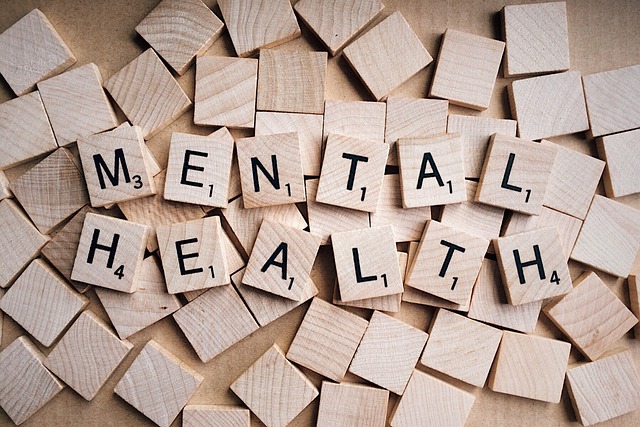Substance abuse among children is a growing concern requiring proactive strategies. Early intervention, recognizing signs like withdrawal or aggression, and open communication are vital. Public awareness campaigns, school resilience-building programs, and mental wellness podcasts can prevent abuse by educating about risks and promoting emotional well-being. EMDR therapy has proven effective in treating underlying trauma and fostering empathy, while behavioral interventions like coaching programs build self-esteem and healthy coping mechanisms. Strong family support systems and community resources, including holistic care models and culturally sensitive services, are crucial for prevention and recovery.
Substance abuse among children is a growing concern, highlighting the need for comprehensive risk reduction strategies. This article explores effective approaches to mitigate this issue, focusing on early detection and prevention, evidence-based therapies like EMDR (Eye Movement Desensitization and Reprocessing), behavioral interventions, supportive family systems, and leveraging community resources. By implementing these strategies, we aim to empower parents, educators, and healthcare providers with tools to nurture a safer environment for children at risk.
- Understanding Substance Abuse in Children: Early Detection and Prevention
- EMDR Therapy: A Powerful Tool for Healing Traumatic Experiences
- Behavioral Interventions: Shaping Positive Choices and Reducing Risks
- Family Support Systems: Nurturing a Safe and Healthy Environment
- Accessing Community Resources: Comprehensive Care for Long-Term Recovery
Understanding Substance Abuse in Children: Early Detection and Prevention

Substance abuse among children is a growing concern that requires proactive strategies for prevention and early intervention. Recognizing the signs and symptoms of potential abuse is crucial, as early detection can significantly impact successful treatment outcomes. Children may display varying behaviors when struggling with substance use, ranging from withdrawal to aggression or drastic changes in academic performance. Parents, caregivers, and educators play a pivotal role in identifying these red flags through open communication and regular monitoring.
Implementing public awareness campaigns and resilience-building programs in schools can be instrumental in preventing substance abuse. Educating young minds about the potential risks and consequences of drug use, along with promoting mental wellness, fosters healthier choices. Additionally, therapies like Eye Movement Desensitization and Reprocessing (EMDR) have shown effectiveness in treating underlying trauma, a common precipitant for substance abuse among children. Encouraging participation in mental wellness podcast series can also provide valuable insights into managing stress, anxiety, and emotional well-being, ultimately reducing the risk of turning to substances as coping mechanisms.
EMDR Therapy: A Powerful Tool for Healing Traumatic Experiences

EMDR therapy has emerged as a powerful tool in the field of mental health treatment, particularly effective for children who have experienced traumatic events. This innovative approach leverages the brain’s natural healing process to help individuals process and overcome distressing memories or experiences. During EMDR sessions, a therapist guides the child through a structured series of eye movements, taps, or other bilateral stimulation while they focus on traumatic memories. This process facilitates emotional regulation and can lead to significant improvements in symptoms related to post-traumatic stress disorder (PTSD).
By addressing underlying trauma, EMDR therapy goes beyond symptom management by fostering empathy building strategies within the child’s support system. It encourages a deeper understanding of their experiences and helps them develop self-care routine practices for better mental health. This holistic approach ensures that children not only recover from past traumas but also gain the tools to navigate future challenges with enhanced emotional resilience.
Behavioral Interventions: Shaping Positive Choices and Reducing Risks

Behavioral interventions play a pivotal role in shaping positive choices and reducing risks associated with substance abuse. These strategies focus on modifying underlying behaviors and thought patterns, empowering individuals to make healthier decisions. One effective approach is Eye Movement Desensitization and Reprocessing (EMDR therapy), which helps individuals process traumatic memories and reduce the intensity of negative emotions attached to them. By addressing past experiences that may contribute to substance misuse, EMDR can significantly enhance mental wellness.
Additionally, fostering self-esteem improvement and conflict resolution techniques through therapy is crucial. Mental wellness coaching programs that incorporate these elements teach individuals coping mechanisms to handle stress and resolve conflicts without resorting to substances. This holistic development not only reduces the risk of substance abuse but also fosters long-term emotional resilience, enabling a more balanced and fulfilling life.
Family Support Systems: Nurturing a Safe and Healthy Environment

Strong family support systems play a pivotal role in mitigating risks associated with substance abuse. Nurturing a safe and healthy environment within the family unit equips individuals, especially children, with essential coping mechanisms to navigate life’s challenges without resorting to harmful substances. By fostering open communication, empathy, and understanding, families can create a supportive network that strengthens resilience against addiction.
Therapy for Children, including techniques like Eye Movement Desensitization and Reprocessing (EMDR), offers specialized guidance for emotional healing processes. This approach aids in addressing past traumas or unresolved issues that might contribute to substance abuse. Additionally, encouraging mental wellness through journaling exercises can help individuals express their feelings, track moods, and gain insights into their emotional states. Such practices promote self-awareness, enabling better management of stress and emotions—crucial aspects of mood regulation.
Accessing Community Resources: Comprehensive Care for Long-Term Recovery

Accessing community resources is a vital step in implementing effective risk reduction strategies for substance abuse. Comprehensive care models, often available through local support networks, offer a holistic approach to long-term recovery. These programs integrate various services, including therapy for children and adolescents, to address the unique needs of individuals and families affected by addiction. By combining individual counseling, group therapy, and community outreach, these initiatives foster an environment conducive to healing and resilience.
Cultural sensitivity in mental healthcare practice plays a significant role in ensuring that resources are accessible and tailored to diverse populations. Inner strength development and self-care practices are also integral components of recovery, empowering individuals to navigate challenges without resorting to substance abuse. Through collaborative efforts between community organizations, healthcare providers, and local schools, a robust support system can be established, offering comprehensive care that respects cultural nuances and promotes long-lasting positive outcomes.
In addressing substance abuse among children, a multi-faceted approach is essential. By combining early detection and prevention strategies with evidence-based therapies like EMDR, behavioral interventions, robust family support systems, and access to community resources, we can significantly reduce risks and foster long-term recovery. These integrated solutions not only help children navigate their challenges but also empower them to make positive choices for a healthier future.











